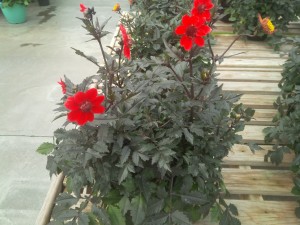
Count on January to deliver uncertain winter weather, post-holiday doldrums and the bills for December extravagance. It also brings the moment gardeners have been waiting for—a chance to sit down with catalogs and websites and plan for the coming growing season. Snow days were meant for wallowing in horticultural daydreams, spending unlimited imaginary money, and feasting on the enticing and exciting new offerings from plant breeders and merchandisers.
One caveat about the word “new”… Often a merchandiser will bill a plant as “new” that has actually been on the market for several years. In such cases, “new” really means “new to this vendor.” It doesn’t really matter. If a plant is new to you; it is “new”.
Since catalogs, websites and other merchandiser PR are as much about fashion as horticulture; it is fun to do some trend-spotting while checking out the new offerings. The following is a look at some hot trends and new plants.
Annuals: Annuals—especially bright-colored ones–are having an ongoing renaissance, because they are so adaptable, working in traditional borders, small spaces, containers, hanging baskets and window boxes. Some people start them from seed, which is cost effective and a great way to grow unusual and interesting varieties. Even more people buy starter plants at nurseries and garden centers. This year, the reign of the hybrid petunia and its glamorous annual relative, the small-flowered calibrachoa, continues. Superbells® ‘Coralina’, a sunset-colored callibrachoa from Proven Winners, is right on trend, with an adaptable mounding/trailing habit and nearly continuous blooms.
Condemned as quintessentially bourgeois twenty five years ago, dahlias continue the surge they have been enjoying for the past five or so years. Merchandisers have discovered that many gardeners are perfectly willing to treat these late summer bloomers as annuals and the labels reflect that . Traditional cannas are being marketed the same way. New dahlia introductions include many in the currently modish yellow/peach/pink range, with bloom sizes ranging from one-inch wide to “dinner plate” size.
Impatiens, including new varieties of large-flowered New Guinea types, help save shade gardeners from a colorless existence. No flower lover in the world has ever boasted of too much sunny space, but for those who love impatiens and have run out of shady corners, new offerings of sun tolerant impatiens will be dotting plant displays starting in March.
Size Matters: Breeders have decided that no plants, from herbs to oak trees, cannot and should not be made smaller. The fashionable large house/small lot situation favored by modern developers, coupled with an increase in the number of gardeners living in apartments and condos means that a wide variety of old favorites, like butterfly bush—buddleia—and hydrangea have been downsized to fit new circumstances. The new Delores River Heritage Oak from Heritage Seedlings, for example, grows only 10 feet tall and fifteen feet wide, with blue-tinged leaves and a tolerance for harsh climates.
Proven Winners’ new Hydrangea serrata or mountain hydrangea, ‘Tiny Tuff Stuff’ tops out at only 18 to 24 inches tall and wide, and blooms on both old and new wood in blue or pink, depending on soil acidity. This year, more than ever, you can grow shrubs and sometimes small trees, even if the only “garden” you have is an old trash can filled with soil.
Perennials that Have it All: Impatient gardeners increasingly want perennials that behave like annuals—blooming two, three or more times during the growing season and providing other interest in the form of good-looking leaves, ground covering ability or pollinator friendliness. One of the latest avatars of this trend is the new echinacea, Lakota ’Santa Fe’, which checks many of those boxes and more. It is descended from a native plant, attracts butterflies and birds, blooms over a long period, and boasts fragrance, compact size and bold color.
Coreopsis, or tickseed, is another good example of perennial that is being bred to perform like an annual, and it is no coincidence that the National Garden Bureau, a trade and marketing group, has christened 2018 “The Year of the Coreopsis”. New Coreopsis varieties will arrive this spring, as they have for the last few, and each one will boast colorful flowers and frequent flushes of summer bloom. You won’t have to be on the lookout for them, because they will leap out at you from the plant pallets.
Other trends to spot include an abundance of golden/green leaves on everything from evergreens to tradescantia or spiderwort. The rainbow of heuchera colors will increase to dizzying levels. Catalog merchandisers will capitalize on customer desire for quick container arrangements, by offering more pre-selected container plant mixes. Many will sell you the container as well. Grasses, which have dominated English, European and some American designs for the past fifteen or more years, are a little less prominent, and the new offerings are more compact than the old. The “easy care” rose is going strong, with every rose merchandiser offering supposedly unfussy new varieties.
If all this sounds overwhelming, don’t worry. Now is the time to dream big garden dreams. Common sense can wait until the first winter thaw.
